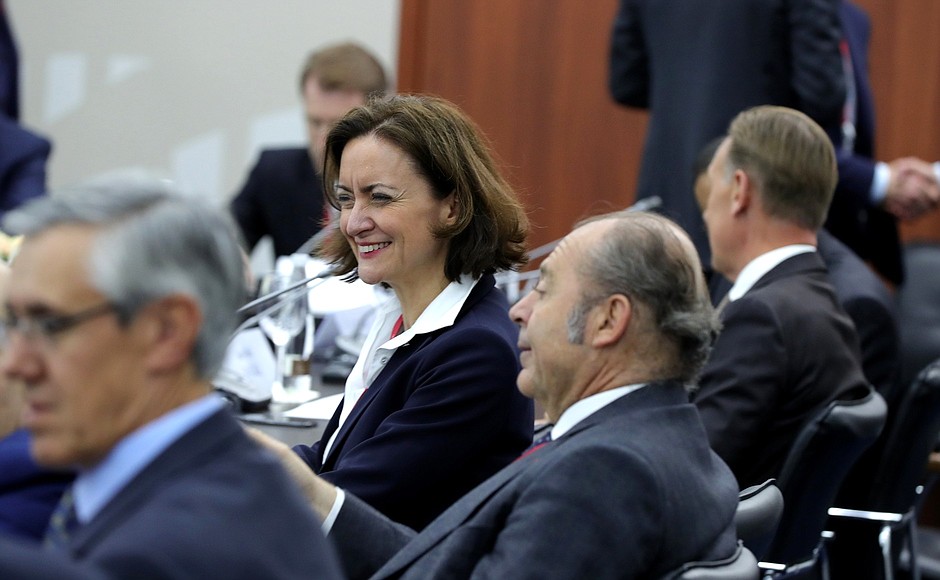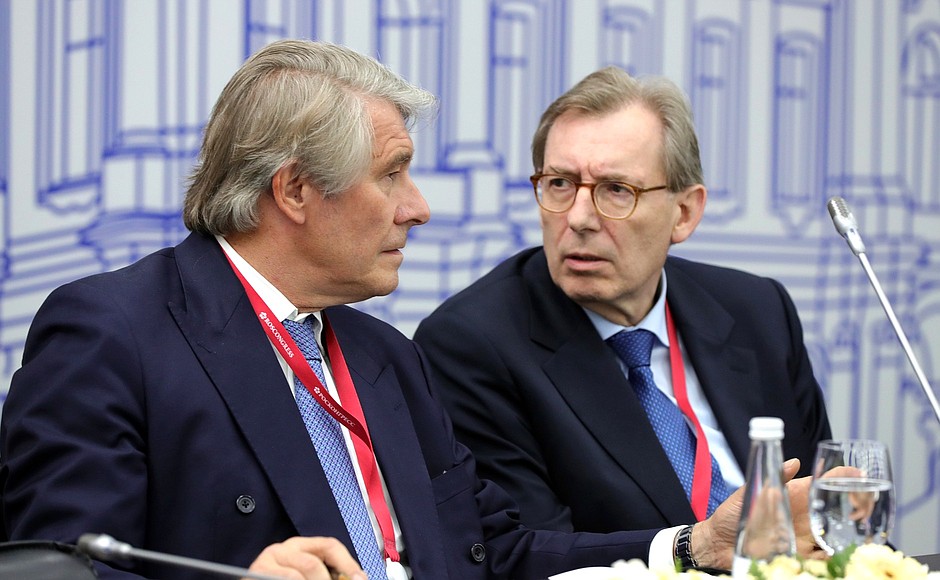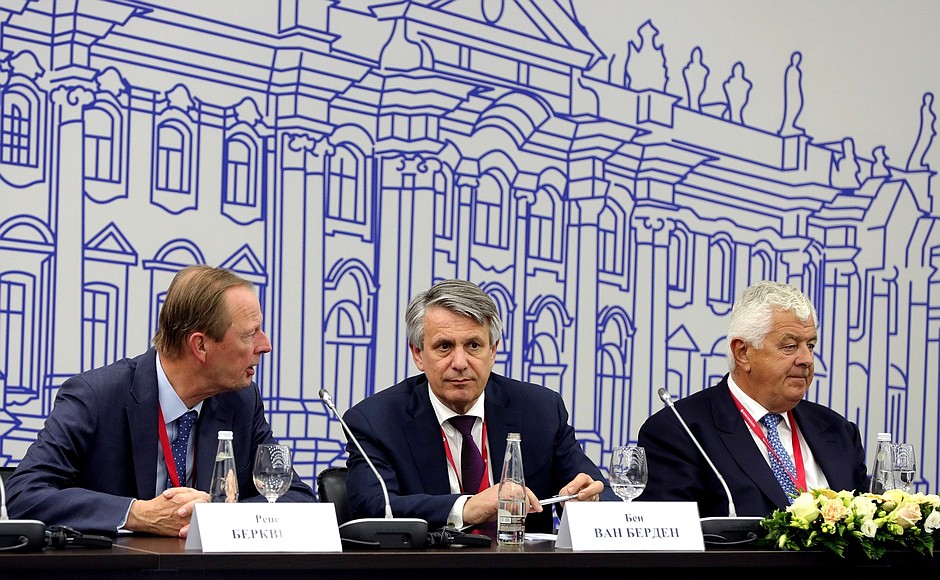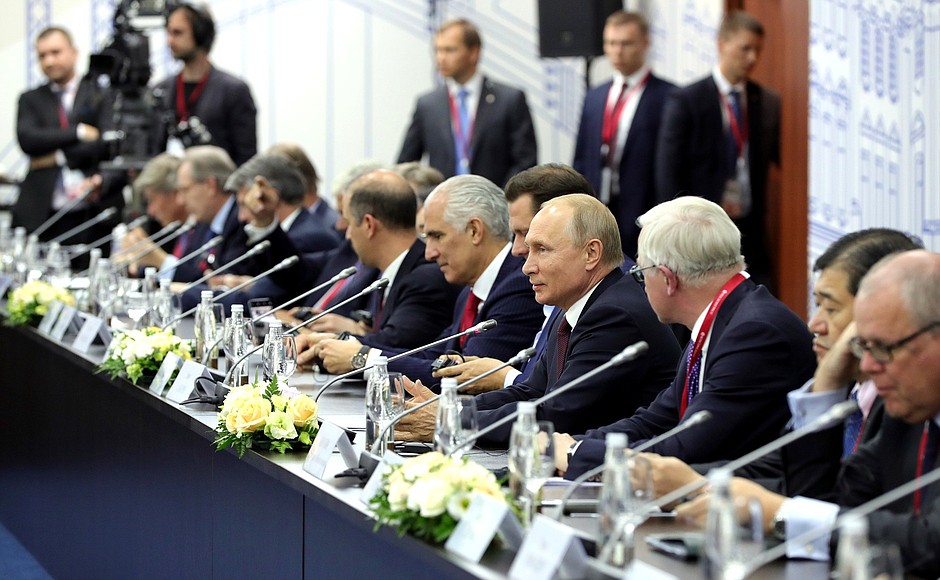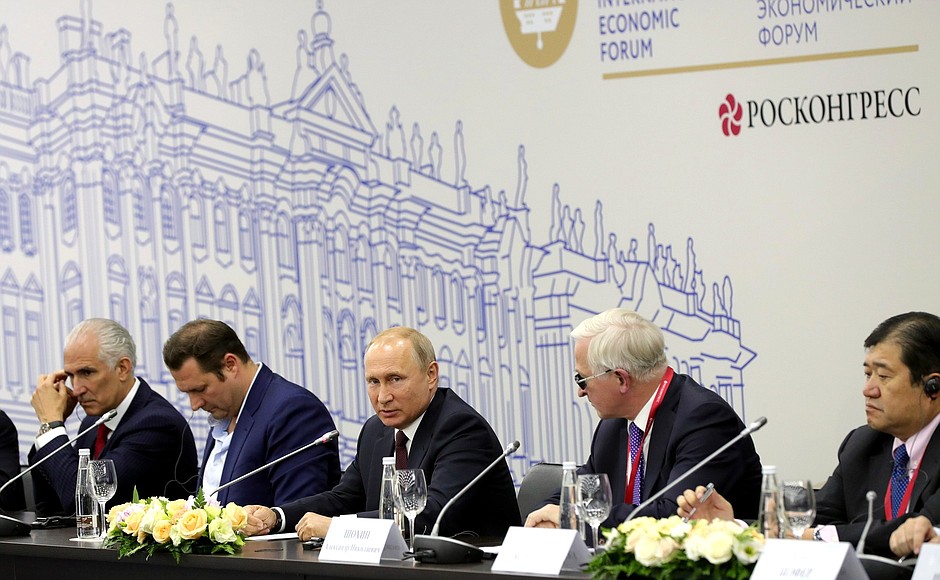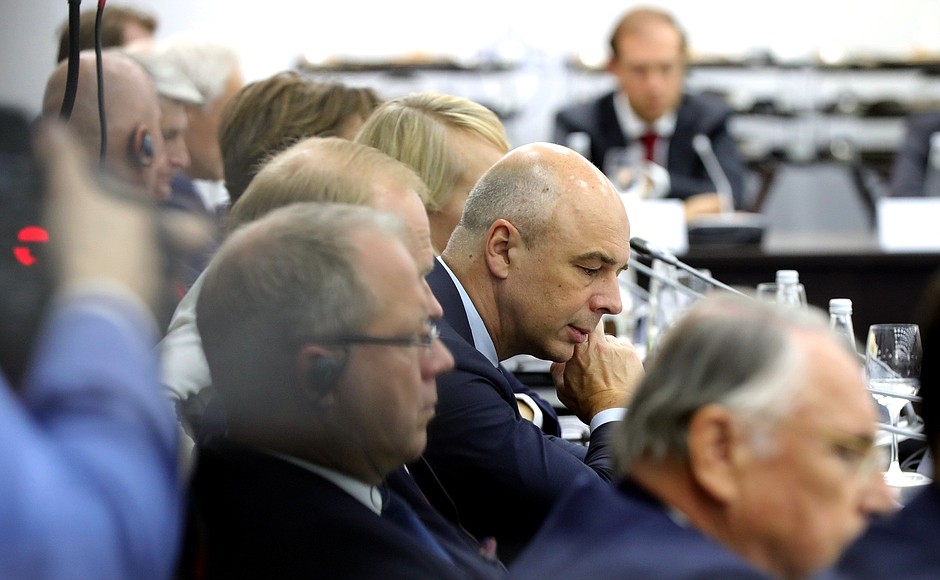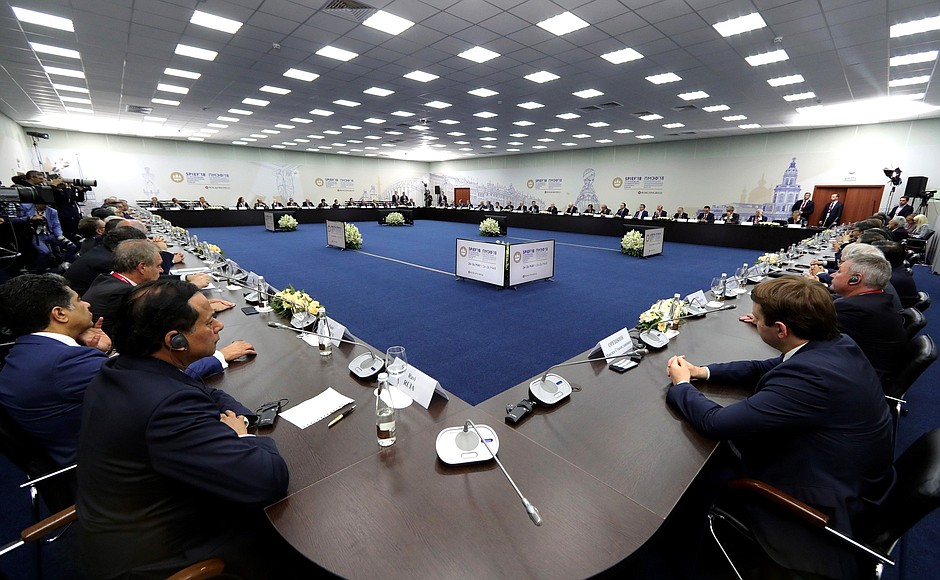President of Russia Vladimir Putin: Colleagues, I am happy to greet you.
There are many familiar faces, many people in this room that I have known for a long time, there are many of those who have been cooperating with Russia for many years. And since you are here, it means the work is progressing in a positive vein. I would like to welcome all of you.
I hope there are those in this room who is planning to make or is making their first steps in the Russian market. I want to say that we will do everything for your work in Russia to be successful. We are as much interested in it as you are.
I have talked a number of times at different venues today about our priorities, about what we are going to do in the near future, what aims we are going to achieve. I will not be going through all that again. I will only say a few words – even though it may also be a repetition – on the current situation in our economy.
I think you will agree that we have recovered our growth – that is an obvious fact. We have decreased sensitivity to volatility in the global markets. Last year Russia’s GDP growth amounted to a modest but sustainable figure of 1.5 percent. We set the task to become one of the world’s top five economies in the coming years.
Actually, we are close to reaching this goal in terms of the purchasing power parity. There was a time when we were part of the top five. Different indicators move either up or down. But we set the task to remain in the top five, and I am sure that we will. In particular, we plan to achieve this by expanding domestic consumer and investment demand.
In this regard I would like to reiterate that, as I just said that at a meeting with our Japanese colleagues, capital investments stood at 4.4 percent in our country in 2017. Taking into account that the GDP grew by 1.5 percent, it means that GDP growth is guaranteed in the short and midterm because capital investments are in advance. This means the money for that growth has already been invested in the economy. And it is a very good indicator.
Household consumer spending grew by 3.4 percent. According to Rosstat [Federal State Statistics Service] preliminary estimates, the GDP grew by 1.3 percent in the first quarter. In January through April the industrial output increased by 1.8 percent, and agricultural output by 2.6 percent. You are aware of the Bank of Russia base interest rate: it is 7.25.
We have achieved a considerable decrease in consumer price growth. Last year, in 2017, inflation, as I have already said, was a record 2.5 percent. In future we plan to rein it in within 4 percent – as my aide Mr Belousov has written for me here. Let me remind you that the Central Bank’s target is somewhat below three percent. All that is related, on the one hand, to the Government’s economic bloc wishing to spend more, which will drive inflation up, whereas the finance authorities want to stash liquidity, and in this case, we would stay below three percent.
The consumer price index in April was 2.4 percent year on year. Unemployment in Russia remains very low at 5.1 percent. This is also a record low. And overall, you know what these figures are in the world economy and the world’s leading economies. This is a good situation.
Trade balance surplus is growing. It was $130 billion last year, which is a quarter more than a year before, so the trend is positive and it continues this year.
According to the Central Bank’s estimates, the trade surplice in January through April of this year was almost $61 billion, and this is also a good figure because it is 43 percent higher than in the same period last year.
The ruble retains stability under floating exchange rate conditions. Russia is invariably among the world’s leaders in terms of gold and currency reserves. Their volume reached $457.7 billion as of May 11, 2018 whereas it was $432 billion at the beginning of the year. Therefore, we see a continuous growth.
We are among the countries with the lowest public debt, which is under 20 percent. Combined with other figures I gave you, it all proves the stability of the Russian economy.
We are pursuing a responsible and prudent budget policy. Last year the federal budget deficit stood at 1.5 percent of GDP whereas the target numbers were around three percent. (Addressing Andrei Belousov.) Is that right, Andrei?
How did we manage to cut the budget deficit? Not only on account of growing prices on our traditional export items, because initially there were none, in fact, but primarily through a targeted policy of cutting ineffective expenditures.
According to the Finance Ministry, this year will see at least a 0.5 percent surplus. In January through April, the federal budget has already been executed with a surplus of 0.6 percent of GDP.
I think I will stop at that, on this overview of the situation in our country, in the Russian economy. Let us engage in a direct and open discussion as we used to do in the previous years.
Thank you for your attention.
<…>
